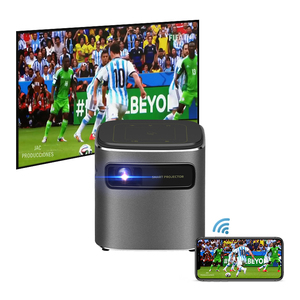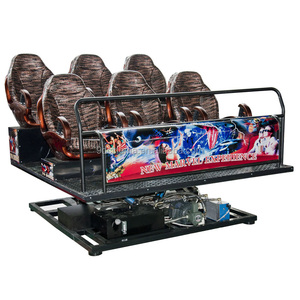
All categories
Featured selections
Trade Assurance
Buyer Central
Help Center
Get the app
Become a supplier

(2559 products available)





















































When discussing the class cinema, it is important to understand that this term refers to two distinct but interrelated concepts. First, it refers to the physical location where films are shown, and second, it relates to the categorization of films based on their artistic and intellectual merit. In terms of physical locations, there are several types of class cinemas, each offering a unique viewing experience:
In terms of categorization, there are several types of cinema class as outlined below:
Some of the usage scenarios of a class cinema include the following:
Corporate Events: In the corporate world, the cinema can be used for presentations, training, and annual general meetings. The corporate world requires a professional setting, and this is what the class A cinema offers. The employees can also watch films for team-building activities.
Film Festivals: A class A cinema is ideal for premiering films because it can showcase films in the best quality. Filmmakers and film lovers get a chance to come together to watch and celebrate films. Film festivals also include award ceremonies, and the cinema offers the perfect setting.
Private Screenings: The class A cinema can be used for private screenings by film studios, celebrities, and other important people in the film industry. These private screenings allow influential people to watch the film and offer reviews and recommendations.
Educational Purposes: Educational institutions use class A cinemas to show documentaries and for film studies. Students get a chance to watch films in the best quality, which is important for their studies. Workshops and lectures can also take place in the cinema.
Special Events: The class A cinema is used for special events such as charity fundraisers. The events require a special setting, and the cinema provides just that. The audience gets a chance to enjoy the event in a spectacular setting while raising funds for a good cause.
Luxury Screening Experience: Some class A cinemas offer a luxury screening experience that includes comfortable seating, food, and drinks. This option is popular with high-end clients who are willing to pay to watch films in a comfortable and classy environment. The luxury experience is ideal for date nights and other special occasions.
When purchasing a movie theater projector for resale, business owners should consider various factors to ensure they get a product that will satisfy their customers' needs. Here are some of them:
Purpose and Usage
Users of projectors have different needs and usages that will require them to get various types of projectors. For instance, some users will need the projectors for educational purposes in schools and institutions, while others will need them for business presentations and meetings. Additionally, some customers will want the projectors for home entertainment, such as watching movies and gaming.
Resolution
Buyers should settle for projectors with high resolutions, such as 4K and Ultra HD. Such resolutions offer clear and sharp images and are suitable for various applications, including detailed presentations and home entertainment.
Brightness
The brightness level of a projector is measured in lumens. At times, the rooms where the users will use the projectors will be lit with ambient light. In such cases, the users will need projectors with high brightness levels. Therefore, business owners should get projectors with high brightness levels for resale.
Portability
Business owners should consider the size and weight of the projectors. Although many customers will want larger screens, some customers will prioritize portability. Therefore, they should get compact and lightweight models that are easy to transport and set up.
Connectivity Options
Business owners should ensure the projectors have multiple connectivity options, such as HDMI, USB, wireless, and others. This will allow users to connect various devices, such as laptops, smartphones, and gaming consoles.
Lens Options and Zoom Capabilities
Buyers should get projectors with interchangeable lenses and zoom capabilities. Such features will enable the projectors to adjust to different room sizes and installation locations.
Audio Quality
In many cases, users of projectors disconnect the projectors' audio from the speakers. Nonetheless, some projectors come with built-in speakers. In such cases, business owners should ensure the speakers have high quality to avoid inconveniences.
Maintenance and Durability
Finally, buyers should ensure the projectors are durable and can withstand regular use. They should also consider their maintenance needs, such as filter replacements and lamp life. In this case, they should get projectors with long lamp life to reduce the cost of ownership.
These cinemas aim to deliver a captivating and immersive viewing experience. This is accomplished through high-quality audio and visual technologies that engage the viewers' senses and make the movie more appealing and enjoyable.
These cinemas provide a cozy and comfortable environment for the viewers. This is achieved by providing spacious seating areas, recliners, and adequate ventilation and climate control systems.
These cinemas offer food and drinks to make the viewing experience more enjoyable. Attendees can indulge in popcorn, snacks, and beverages while watching the movie.
Seats are an essential feature of a first-class cinema. They are designed to provide the viewers with comfort and support during the entire movie. Also, the seats may come with armrests, cup holders, and in-seat snack trays to enhance the audience's experience.
These systems are essential in a cinema. They are designed to provide high-resolution images and clear sound. Some visual systems include laser projectors and screens that enhance viewing experiences. Additionally, the audio systems include surround sound, subwoofers, and speakers that ensure the audience listens to crisp and clear sound.
Cinema halls are designed to ensure proper acoustics are maintained. This allows the audience to hear even the slightest sound with clarity. The walls and ceilings are often fitted with sound-absorbent materials to prevent echo and outside noise interference.
These are clean and well-maintained facilities that enhance the audience's comfort and convenience during the event. They are usually located within reach of various cinema halls to ensure accessibility.
The interior design of first-class cinema is often luxurious and inviting. It incorporates rich colors, elegant furnishings, and ambient lighting to set a relaxed and sophisticated mood. Also, the interiors are usually decorated with artworks, carpeting, and stylish fixtures that enhance their aesthetic appeal.
The first-class cinema exterior is usually eye-catching and distinctive. Some of the elements that make them stand out are marquees, decorative signage, and architectural details. These elements are often illuminated to enhance their visibility and appeal at night.
These cinemas are designed to be accessible to all viewers. They include ramps, elevators, and designated seating areas for people with disabilities. This ensures everyone can enjoy the movie with comfort and ease.
Q1: Are there any special maintenance requirements for a luxury class cinema?
A1: Yes, luxury cinemas require regular maintenance to ensure cleanliness and comfort. The seats should be cleaned and inspected regularly for any signs of wear and tear. The audio-visual equipment may need occasional updates and maintenance to provide the best viewing experience. Additionally, the overall environment, including temperature and scent, should be managed to maintain the luxury experience.
Q2: What role does the scent play in the experience of a luxury cinema?
A2: The scent can significantly impact the overall experience by creating a more inviting and immersive atmosphere. A signature scent, which is subtle and pleasant, can help to evoke a sense of luxury and exclusivity, making the customers feel special and enhancing their overall experience. The cinema's ambiance is therefore elevated, and it can set the mood for the patrons.
Q3: How does a luxury cinema maintain an intimate atmosphere even with a larger crowd?
A3: Luxury cinemas maintain an intimate atmosphere through effective crowd management, thoughtful design, and high-quality service. The seating arrangements should allow for private spaces, even when the cinema is full. The staff should be trained to provide discreet and attentive service, and the overall environment should be kept serene and quiet to maintain the intimate atmosphere.
Q4: What are the common challenges in managing a luxury cinema class?
A4: Some common challenges include maintaining consistency in service quality, keeping the cinema clean and well-maintained, managing customer expectations, and ensuring that the audio-visual equipment is in top shape. Additionally, managing the inventory of luxury concessions and ensuring that the cinema remains profitable while providing a luxury experience can be challenging.